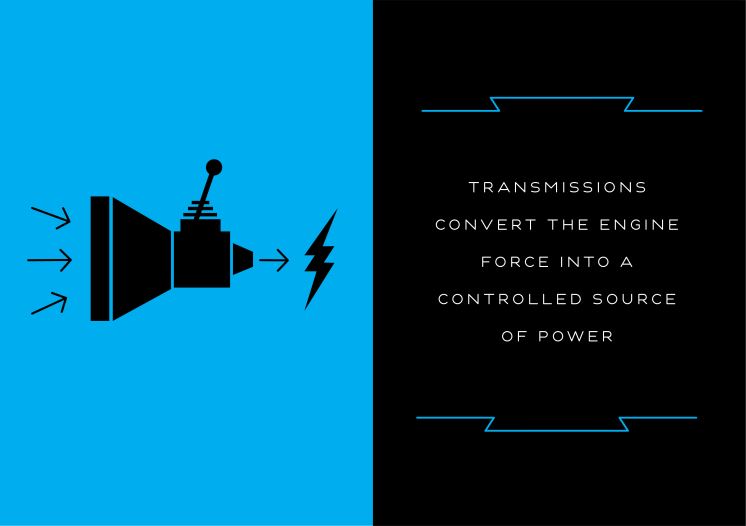
Similar to oil, transmission fluid is a lubricant. Its purpose is to keep the transmission lubricated, clean, cool, sealed, and most importantly, to transfer power. But before we get further into transmission fluid, lets have a little “transmission refresher.”
Most of us know two things about transmissions:
- It's an important part of the vehicle - essential for getting from Point A to Point B.
- Repairing anything transmission-related costs an arm and a leg.
But you may not know why. Your transmission is one of the most complicated systems in your vehicle, responsible for literally making the wheels turn. Transmissions convert the engine force into a controlled source of power; they take the power from the engine, turn it into torque, and transmit that rotational speed to the axles, which in turn rotate the wheels.
In manual vehicles, the transmission is connected to the engine by way of the clutch. If a vehicle doesn’t have a clutch (or the clutch is broken), the engine will die each time it comes to a halt.

So how do automatic vehicles keep going without a clutch?
The torque converter. This device is a type of fluid coupling which allows for stopping and starting without engaging and disengaging gears or clutches.
Clutches and bands only engage and disengage during changes between 1st, 2nd, and 3rd gears. The slippage of clutches and bands during gear changes is controlled and of short duration. A significant amount of the heat generated in automatic transmissions is from the torque convertor, especially when engine speed is not directly coupled.
Where does the automatic transmission fluid (ATF) come in?
As with motor oil in the engine, ATF is used to both cool and lubricate the transmission. Heat contributes to deposits and varnish on surfaces and slowly breaks down ATF fluid. Friction, while necessary for a transmission to function, generates heat and contributes to wear. The torque convertor also generates heat. Consequently, ATF is formulated to balance cooling parts of the transmission and lubricating others. In addition to cooling and lubricating, ATF offers resistance to cold, oxidation, friction, and shearing.
Do you actually need to change the transmission fluid?
Yes, but not as often as other fluids. Typically it needs to be changed every 30k-100k miles, but always consult the maintenance schedule in the owner’s manual to see what the manufacturer recommends. Over time, transmission fluid gets contaminated with dirt and particles and the particles make it more difficult for the transmission fluid to flow properly. Driving conditions also influence how quickly the fluid deteriorates.

Transmission fluid will need to be changed more often if driving in high-stress conditions, such as frequent stop-and-go city driving,towing heavy loads, or driving up and down hills regularly. Other signs fluid may need to be changed are problems shifting smoothly and color and odor of the transmission fluid.
One thing’s for sure: You won’t be Never Idle in an automatic vehicle with a bad transmission.
- Prior to using or installing any of these products always consult your vehicle’s owner’s manual for compatibility and warranty information.
- Valvoline does not guarantee, approve or endorse the content available on linked sites.
- Always take appropriate safety precautions when working on or operating your vehicle. Take the necessary steps to help prevent injuries; always use protective gear like helmets, safety goggles, and gloves.


Don't miss out on new content
Thanks for signing up. Set your password and start earning reward points for everything you do on the site.
You already have a Team Valvoline account. Sign in here.
Did you forget your password?